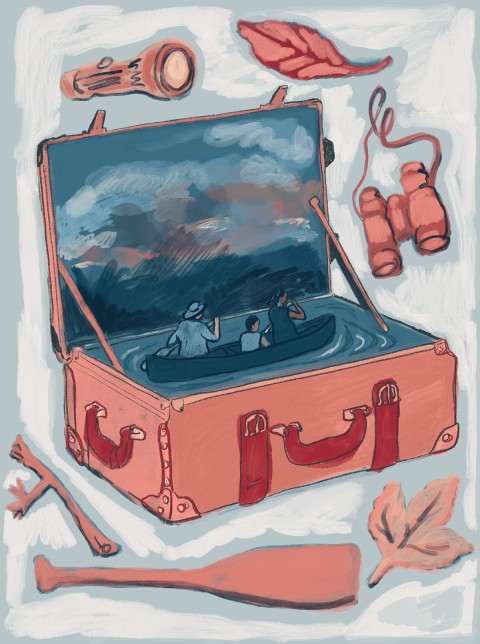Kindled in the wild
Many young people love going to church camp. How does it shape their spiritual lives after they return home?

illustration by Martha Park
My teenage summers were spent at camp, exploring the Boundary Waters Canoe Area Wilderness in northern Minnesota and Quetico Provincial Park in Ontario. I remember the moment I realized I was the only person of faith among a group of 16-year-old girls and our counselor. I had no judgment, only gratitude for all the people and experiences who had fostered that faith deep in me. I was able to make theological connections and continue practicing my faith out there in the north woods because my parents and myriad other saints had handed down the faith to me for years.
I’ve wondered about the connections between church, camp, and home for most of my life. Youth ministry scholars tend to dismiss camp as mere fun and games and critique it for being theologically shallow, as do many of my pastoral colleagues. But what if we envisioned camp as a space to train young people in the language of faith and to spark faith conversations, along with other practices, in the home? This is exactly what the Rhythms of Faith Project seeks to do: to use camp as a catalyst for family faith formation.
When I was in graduate school, I wrote theological papers about outdoor ministries. I tried to cite quantitative data on the impacts of Christian camps, but no one seemed to have any. Camp shaped me, as it did the children and youth I have helped send to camp, so I am elated to see that serious research is now being done on the power of camp to influence young people, their families, and the church.




